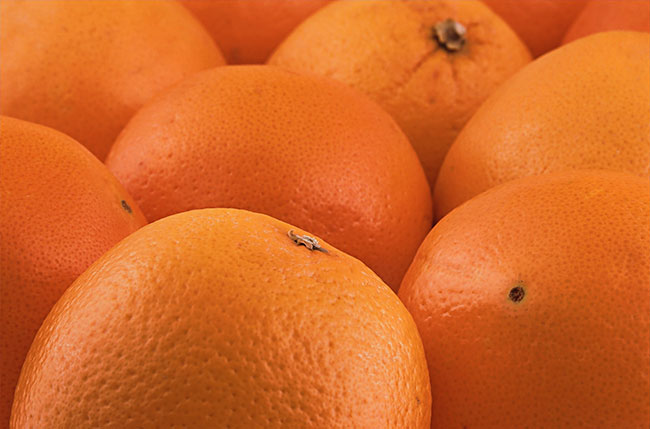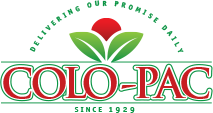
Orange trees are the most cultivated fruit trees in the world, and oranges are one of the most commonly used fruits. Oranges have not been found in the wild, so their origin is largely unknown. It is speculated that oranges originated somewhere around the border between China and India, since this region is where orange cultivation was first recorded. Oranges were first grown in Asia, but they’ve also been grown in the Middle East for centuries. When oranges were first introduced to Western Europe, sometime in the late fifteenth or early sixteenth century, they were only available to the wealthy, because they were difficult to grow in the dry, temperate climate of Europe. They grew more easily in the Mediterranean, but most orange consumption in Europe was restricted to the very wealthy who constructed special buildings in their estates for the growing of oranges called orangeries. Oranges were highly valued by European sailors, as their high vitamin C content prevents scurvy. Dutch and Spanish merchants planted orange trees on islands along their trade routes. Christopher Columbus is credited with introducing oranges to the Americas when be brought orange seeds with him on his second voyage. Since then, oranges have been cultivated in Florida, and later in California. Today, oranges are grown in massive scales all throughout the world, with Brazil being the biggest orange producer by a wide margin, followed by the US and China which are a distant second and third. Many applications for oranges have been developed beyond simply eating the fresh fruit. Certain types of oranges are grown for particular purposes, such as Bergamot oranges, grown for their peel which is used in teas like Earl Grey. Certain types of pesticides and cleaning products can be derived from the citrus oils of oranges. The wood and flowers are also used in various applications such as medicine, perfume and orange blossom honey, made by bees that consume the nectar of orange blossoms. Due to their many uses and derivatives, oranges have long been the focus of crop development, and their production has become cheaper, meaning that oranges today are more widely available all throughout the year. Valencia and navel oranges are the most common types of orange available, largely because they can be grown in opposite seasons, making oranges can be available all year. Because oranges are grown from coast to coast in North America and all regions have slightly different growing seasons, navels and Valencia oranges are produced nearly year-round. Valencias are produced all year except December and January and navels are produced in all months but July and August.
Oranges are delicious on their own, but they can be used as an ingredient in quite a few recipes. One of the most common uses for oranges throughout the world is in the production of juice. Because of their exceptionally high juice content, and low seed content, Valencia oranges are great for juicing. Orange juice is itself a popular drink, but it can also be used in cocktails like the brunch buffet favorite, mimosas, a mix of orange juice and sparkling white wine. Sweet liqueurs are made with oranges as well, such as triple sec and Grand Marnier. Sangria recipes often include fresh oranges. Because oranges have a relatively high pectin content, they are often used in marmalade, jam, and jelly. Like limes and lemons, oranges can be used for their zest, small shavings of their outer skin. Orange zest can be used to add a hint of citrus to a recipe. Adding orange zest to creamy sauces for pastries is a particularly popular and delicious use for it. Scones made with orange zest in the dough, and orange juice in the glaze are exceptionally tasty. The sweetness of the orange pairs well with the tartness of cranberry, so the two often are used together, especially in the previously mentioned pastries. Going the savory route with oranges is always a possibility as well. Many Asian dishes feature oranges alongside meats, vegetables and rice. While not necessarily a traditional Chinese dish, orange chicken is an ever popular dish which can be prepared in numerous ways. To achieve the sticky, tart texture that characterizes the American version of this dish, a combination of orange preserve and orange juice is used. The sugar in the orange preserve caramelizes as it is cooked, turning it into a thick, tangy sauce. The traditional Hunan Chinese version of orange chicken is prepared with dried orange peel used to flavor the chicken.
When choosing oranges, it is best to go by how the fruit feels. A high quality fresh orange will feel heavy and firm. The heavier an orange is, the juicier it will be. Often, smaller oranges are sweeter than larger ones, and oranges with thinner skin can be sweeter than others. Some oranges have thin enough skin to peel with bare hands, especially smaller varieties like clementines, which are a hybrid between a mandarin and a sweet orange. Larger oranges typically have very thick skin and cutting the orange into sections is the easiest way to prepare them. Always thoroughly wash oranges before peeling them. Any contaminants on the skin will be transferred to the flesh of the fruit when the skin is broken.


 BACK TO PRODUCTS
BACK TO PRODUCTS